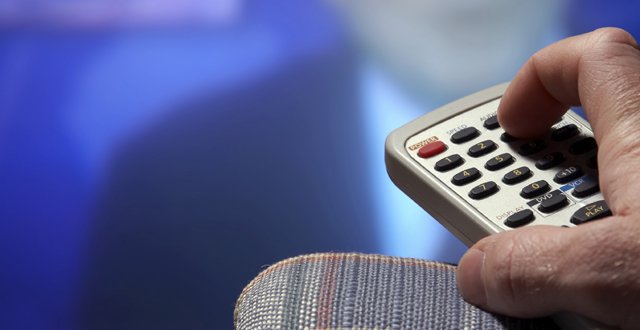
It’s time to tackle the pandemic of TV sport over-consumption and get our running shoes on
One July day in 1972 I called at my mate’s, ready for a ‘rake-about’. His mother answered the door. “Our Davy’s watchin’ the ‘lympics… ” a slight pause, “… in colour.” Did her narrowing eyes betray a triumphant gloat, or was it smoke from the fag in her mouth?
Our North Belfast street had experienced many things —
notably shootings and explosions — but… colour telly? We were upwardly mobile!
Hitherto, luxury meant smoking Peter Stuyvesant cigarettes in a vandalised
cricket pavilion. Now, a colourful televisual future beckoned… despite my
father’s stubborn insistence that telly wastes time.
It only took me many years to realise he was right, which
is why I’ll assume the shape of a wet blanket and mount my high horse (always
tethered nearby) to suggest that televised sport does nothing for health and
everything for obesity. SportBusiness Consulting’s Global Media Report
2018 (https://media.sportbusiness.com/) states: “[t]he
global value of sports media rights was just over $49.5bn in 2018, up from
$46.8bn in 2017.” This means that sports telly tycoons are obsessed with the
bottom line; specifically, those bottoms that are lowered onto sofas, enabling
their owners to view anything from the recent Wimbledon and World Cup cricket
finals to Rhyl’s Rarebit-Rolling Championships.
Unfortunately, the price of these waist-boosting wastes of
time stretches beyond that of a TV licence. For example, when Heron et al,
writing in the Journal of Epidemiology and Community Health (2019, 73:
625‒629), considered ‘Direct healthcare costs of sedentary behaviour in the
UK’, they found that NHS costs related to sedentary behaviour in 2016–2017 were
£0.8 billion, including expenditure on “cardiovascular disease (£424 million),
type 2 diabetes (£281 million), colon cancer (£30 million), lung cancer (£19
million) and endometrial cancer (£7 million)”.
It’s tempting to invoke class as a determinant of couch
potato behaviour. For instance, in July this year, Groeniger et al asked in the
International
Journal of Public Health, ‘Are socio-economic inequalities in diet and physical
activity a matter of social distinction? A cross-sectional study’.
They posit an important role for education, suggesting
that health behaviours like high-brow cultural participation are adopted as an
expression of social distinction: “This distinction mechanism may be an
important determinant of health behaviour inequalities.” It may be, but a
superior education doesn’t necessarily induce “a tendency to consume more
high-brow cultural activities, as well as a tendency to eat more healthily and
to be more physically active during leisure time.”
The aspiration of a civilised life for everybody — best
summarised by Saul Bellow’s Augie March as a “universal eligibility to be
noble” — is there for us all, and it’s nonsense to imply that those lacking a
formal education are neither capable of independent thought, nor of knowing what’s
good for them. Yet there’s no denying the expanding constituency of couch
potatoes; so, if poor education isn’t a factor, what might be? I suggest
laziness, gullibility and a blithe acceptance of one’s place in the sporting
world… as consumer, not participant.
For example, a biscuit-maker became a sporting role model
when British Olympic Association Commercial Director Tim Ellerton offered his
delight in welcoming “a great British brand in the shape of McVitie’s to the
roster of supporters for Team GB as we head towards Tokyo”.
Similarly, the ever-popular Confectionery News revealed that in
May this year, tennis star Maria Sharapova attended the Sweets and Snacks Expo
in Chicago to unveil four new types of “all-natural gummy flavours”.
Sharapova’s company Sugarpova (geddit?) “is a premium confection line that
celebrates hard work” and was founded in 2012 by the five-time grand slam
singles champion, who recalled “when she would reward herself after a long day
of practice with a sweet treat”. Interestingly, in March 2016, after she tested
positive for the banned drug meldonium, Reuters reported Sharapova’s claim that
she had been taking meldonium “for a decade to treat diabetes and low
magnesium” [my bug-eyed emphasis].
With commercial sport promoting biscuits to further
Olympian ideals, and diabetic tennis players flogging sweets, it’s time to
reject such nonsense and no longer give our mute assent to the subliminal
televisual suggestion that it’s better to be a consumer than a participant.
Let’s undertake to ditch televised sport and get outdoors,
where it’s still possible to spectate, even while exercising. For example,
ahead of the recent Scottish Open Golf Championship, the European Tour’s Chief
Medical Officer Dr Andrew Murray outlined some of the benefits of attending
golf tournaments: Gaining physical activity, fresh air and time with family; UK
golf spectators achieving 11,500 steps, 85 per cent meeting daily physical
activity guidance; and informed spectators being keen to become more active in
daily life. Significantly, following Murray et al’s investigation of golf
spectators in Scotland (BMJ Open Sport & Exercise Medicine, 2017;3: e000244)
they suggested: “A key element of generating increased physical activity (PA)
in relation to a sporting event may be to de-emphasise participation in the
sport itself and promote PA more generally.”
Watching sport on
telly is not participation, but regular exercise contributes to Augie March’s
“universal eligibility to be noble”.





Leave a Reply
You must be logged in to post a comment.